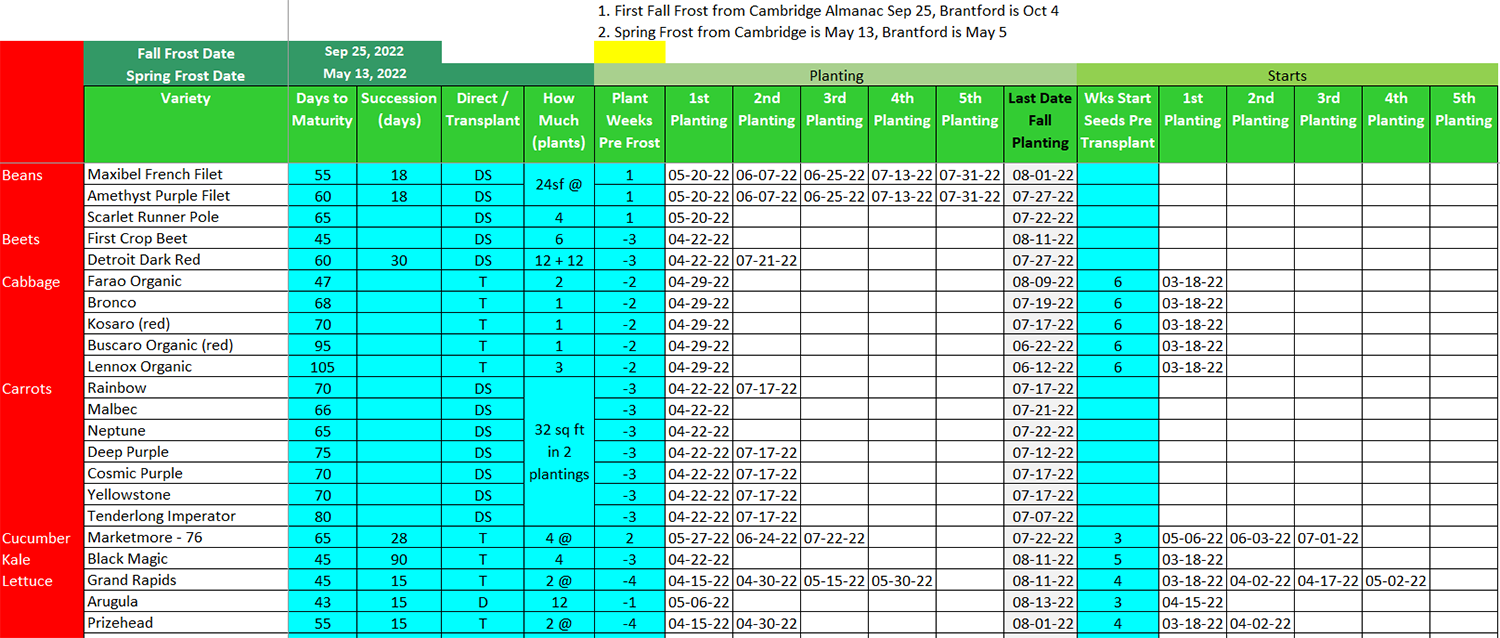In my working life I was an accountant so it’s no surprise that I use an Excel spreadsheet to calculate when to start seeds indoors. It’s similar to many automatic seed-starting charts across the web, although I’ve customized my spreadsheet for what works in my garden. My plan allows me to work off my expected last frost date but with some adjustments based on the vagaries of our Ontario spring weather. I use this seed-starting excel calendar for vegetables, annuals, perennials and herbs. It’s a list of what to plant, how much and when.

What’s changed for this year:
- starting tomatoes one week later
- starting cosmos two weeks later, testing some via winter sowing
- starting annual salvia one week later
- starting zinnia one week later, testing some via winter sowing
- starting gomphrena two weeks later
- starting angelonia one week later
- trying some perennials from seed for the first time, varying some start times to see what is best.
I will also try the winter sow method for zinnias, cosmos and marigolds. Again, I don’t know about start dates, so I’ll pick some dates two to three weeks before my regular indoor sowing and compare the results.
For 2024, here is my seed starting and sowing plan by week:
| Week of | Seeds to start |
| January 15 | Starts: lisianthus, balloon flower, echinacea, perennial salvia |
| January 29 | Starts: pansy |
| February 12 | Starts: foxglove |
| February 19 | Starts: rosemary (unless I do cuttings) |
| February 26 | Starts: onions, begonia, euphorbia, heliotrope, annual salvia, primrose (cold strategy 2 weeks) |
| March 4 | Starts: |
| March 11 | Starts: celery, parsley, alternanthera, dichondra, dusty miller, lavender, kirigami, verbena Start watching lisianthus to plant out in garden |
| March 18 | Starts: cabbage, kale, lettuce, swiss chard, lobelia, angelonia |
| March 25 | Starts: ageratum, alyssum, agastache, gomphrena, primrose (out of fridge) |
| April 1 | Starts: basil, peas, tomatoes, second lettuce, marigold, ornamental pepper, dahlia |
| April 8 | Starts: cosmos, helichrysum |
| April 22 | Starts: zinnia Direct sow: beets |
| April 29 | Starts: dill Direct sow: carrots |
| May 6 | Starts: cucumbers, squash, zucchini |
| May 13 | Plant: potatoes |
| May 20 | Direct sow: Beans |
| Jun 3 | Direct sow: second cucumber |
| Jun 10 | Direct sow: second beans |
| June 24 | Direct sow: second beets Starts: Flowering Kale |
| Jul 1 | Direct sow: third beans, second zucchini |
| Jul 22 | Direct sow: fourth beans, fall peas |
| Aug 26 | Direct sow: spinach in the cold frame |
The above is based on a last frost date of May 13 but assumes warm season crops and annuals will not be planted out until after the May 24 weekend. Most seed packages for tender plants say to plant out after all danger of frost has passed. Many seed calendars use your last frost date for this calculation. The problem is we frequently get a severe cold snap long past mid-May, even if it doesn’t officially bring frost. So warm season crops should not go in the ground for at least two weeks past the last frost date to avoid having cold weather set them back. You can check the weather forecast all you want, but it’s rarely accurate two weeks out. I have learned the hard way to wait. So I’ve added a column to my spreadsheet (plant weeks pre-frost) that allows me to work seed starting times from when I actually plan to transplant to the garden rather than one static date and keep adjusting this time based on experience.